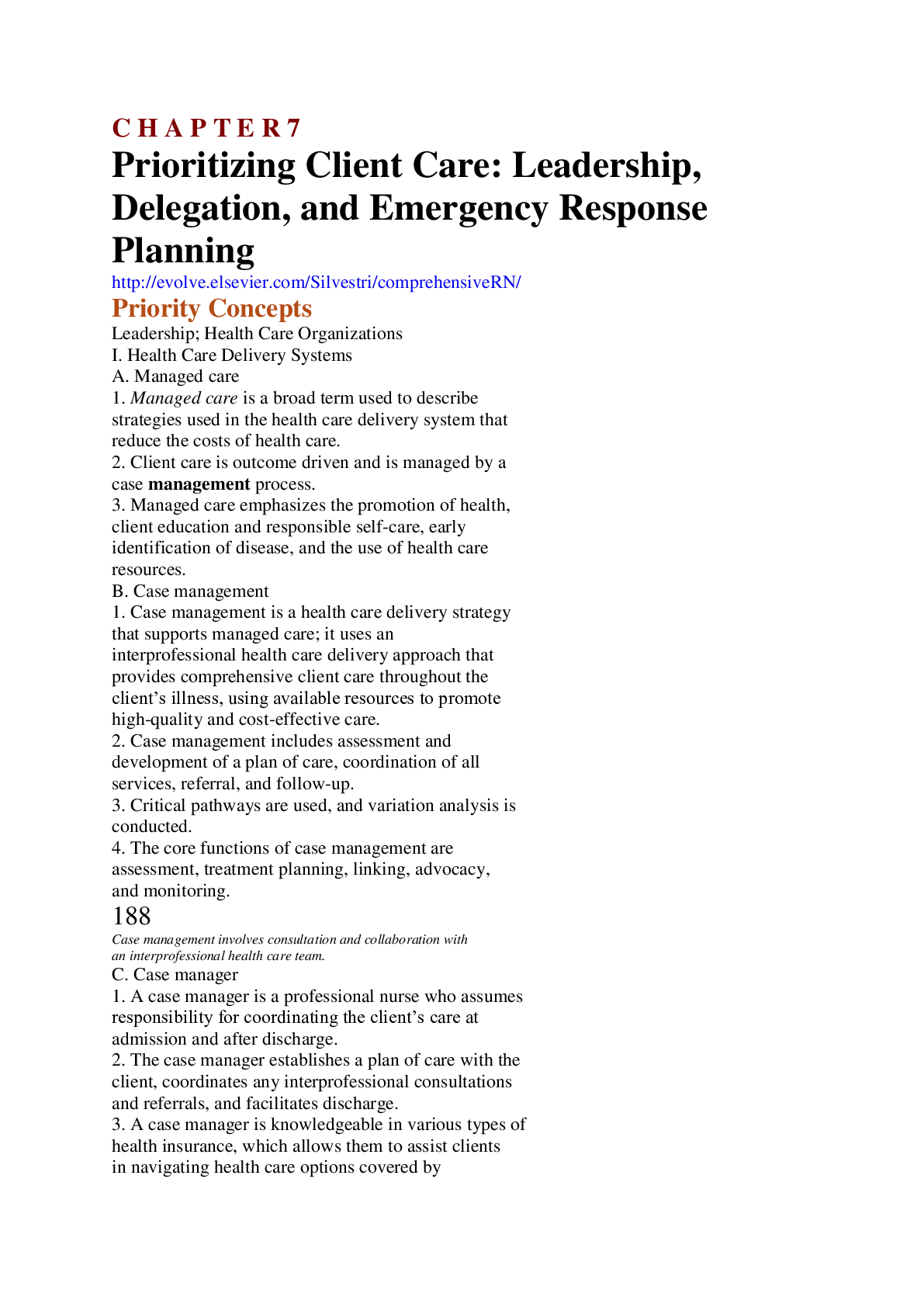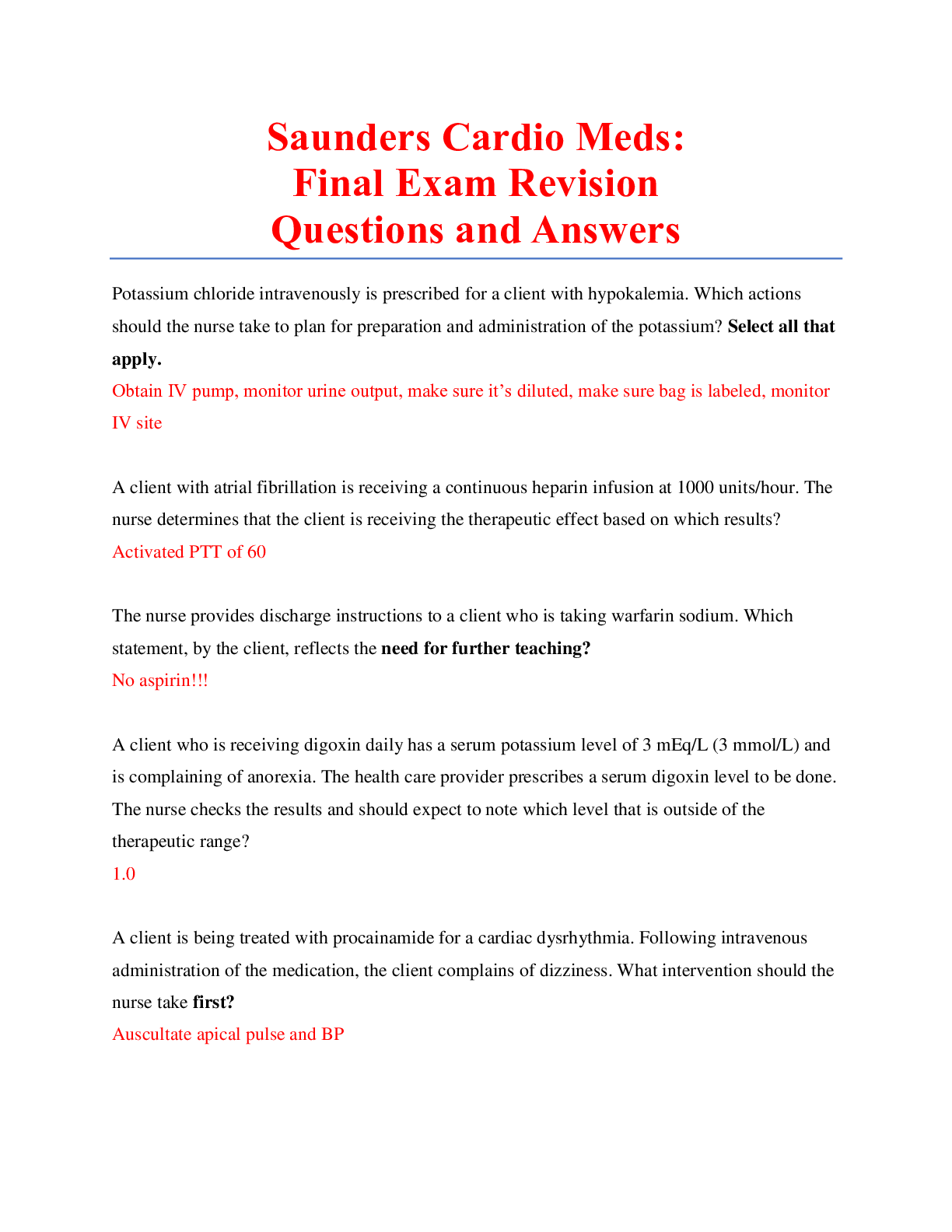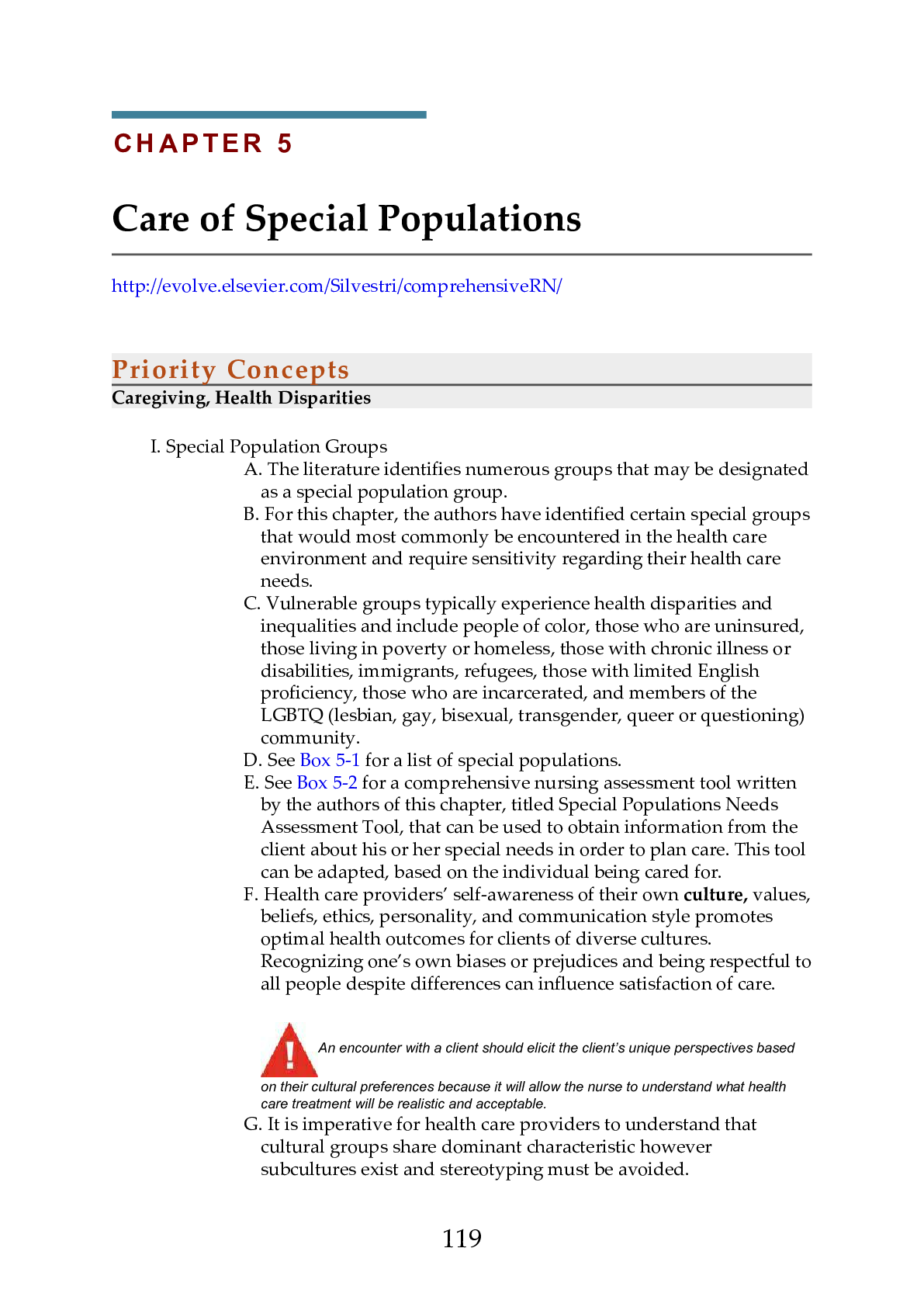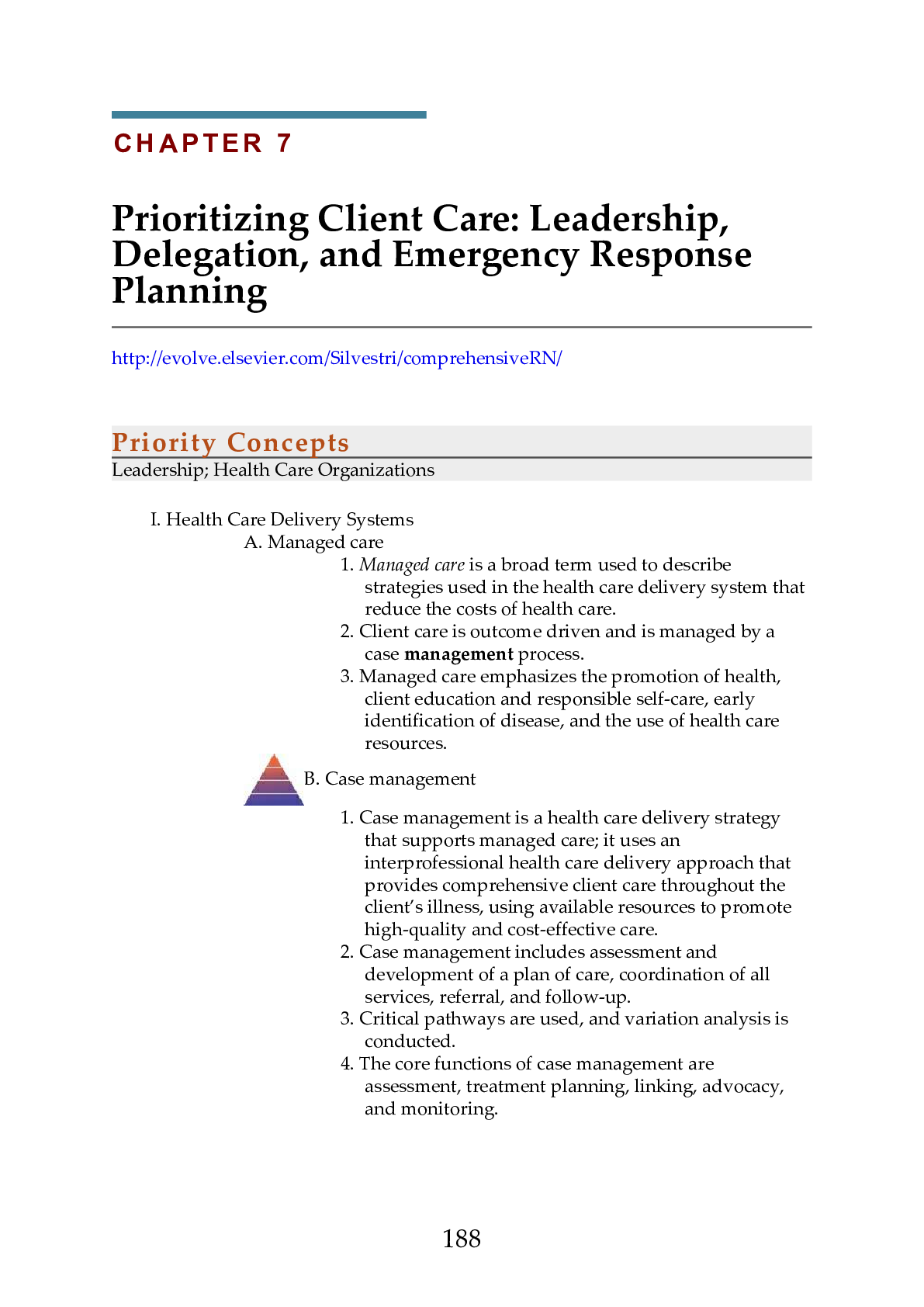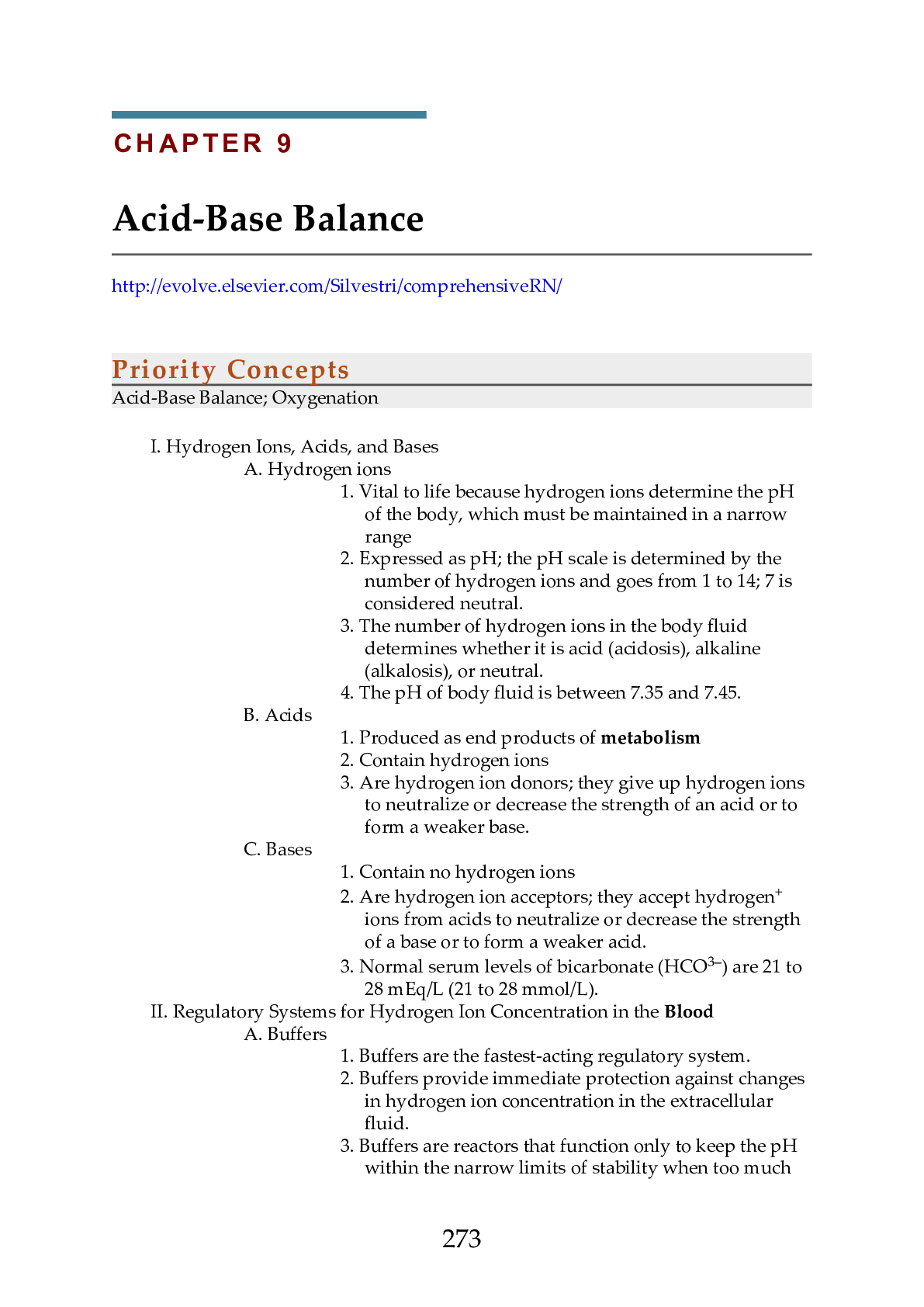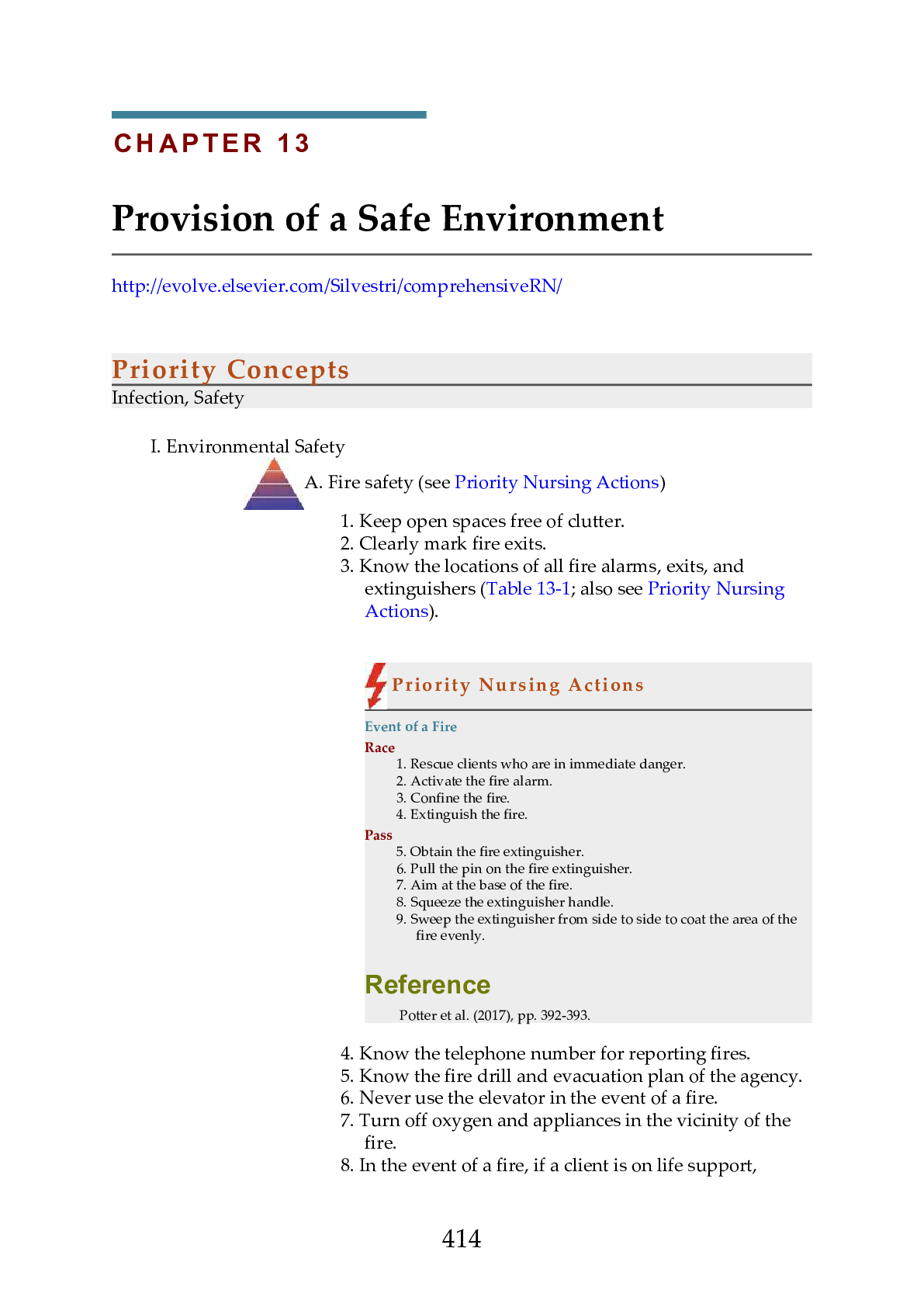Saunders Comprehensive Review for the NCLEX-RN Examinations 8th edition
Document Content and Description Below
Reduction of Risk Potential A magnetic resonance imaging (MRI) study is prescribed for a client with a suspected brain tumor. The nurse should implement which action to prepare the client for this ... test? 1. Shave the groin for insertion of a femoral catheter. 2. Remove all metal-containing objects from the client. 3. Keep the client NPO (nothing by mouth) for 6 hours before the test. 4. Instruct the client in inhalation techniques for the administration of the radioisotope. Answer: 2 This question addresses the subcategory Reduction of Risk Potential in the Client Needs category Physiological Integrity, and the nurse’s responsibilities in preparing the client for the diagnostic test. Focus on the subject, preparing a client for an MRI. In an MRI study, radiofrequency pulses in a magnetic field are converted into pictures. All metal objects, such as rings, bracelets, hairpins, and watches, should be removed. In addition, a history should be taken to ascertain whether the client has any internal metallic devices, such as orthopedic hardware, pacemakers, or shrapnel. A femoral catheter is not used for this diagnostic test. An intravenous (IV) catheter may be inserted if a contrast agent is prescribed. Additionally, shaving is not a common practice because of the risk for microabrasions and infection. If needed, hair may be clipped away from a surgical or insertion site. NPO status is not necessary for an MRI study of the head. Inhalation of the radioisotope may be prescribed with other types of scans but is not a part of the procedures for an MRI. Physiological Adaptation A client with renal insufficiency has a magnesium level of 3.5 mEq/L 1.44 mmol/L). On the basis of this laboratory result, the nurse interprets which sign as significant? 1. Hyperpnea 2. Drowsiness 3. Hypertension 4. Physical hyperactivity Answer: 2 This question addresses the subcategory Physiological Adaptation in the Client Needs category Physiological Integrity. It addresses an alteration in body systems. Focus on the data in the question. The normal magnesium level is 1.8 to 2.6 mEq/L (0.74 to 1.07 mmol/L). A magnesium level of 3.5 mEq/L (1.44 mmol/L). indicates hypermagnesemia. Neurological manifestations begin to occur when magnesium levels are elevated and are noted as symptoms of neurological depression, such as drowsiness, sedation, lethargy, respiratory depression, muscle weakness, and areflexia. Bradycardia and hypotension also occur. 54 [Show More]
Last updated: 1 year ago
Preview 1 out of pages

Buy this document to get the full access instantly
Instant Download Access after purchase
Add to cartInstant download
We Accept:

Reviews( 0 )
$38.00
Document information
Connected school, study & course
About the document
Uploaded On
Jun 02, 2023
Number of pages
Written in
Additional information
This document has been written for:
Uploaded
Jun 02, 2023
Downloads
0
Views
11


